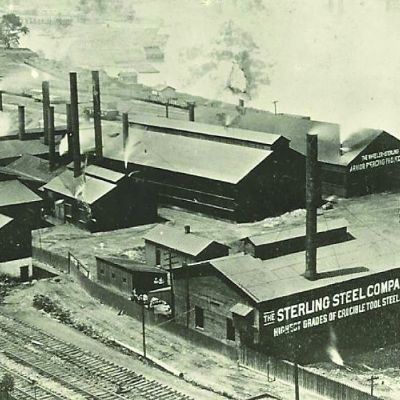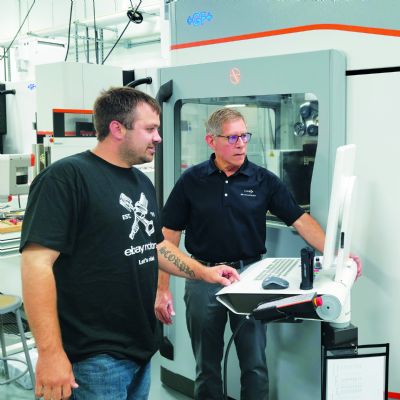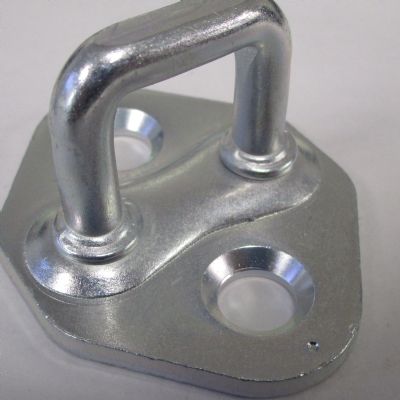The useful alloy content of most tool steels exists as carbide particles within the annealed steel. This alloy content is at least partially diffused into the matrix at the hardening or austenitizing temperature. High temperatures allow more alloy to diffuse, permitting slightly higher hardness or compressive strength. At lower temperatures, less alloy diffuses into the matrix and the matrix is therefore tougher, or less brittle, although it may consequently not develop as high a hardness. The hold times used depend on the temperatures. Alloy diffusion occurs more rapidly at higher temperatures, with soak times decreased accordingly. For the best combination of properties, use the lowest hardening temperature that will produce adequate hardness for your application.
Quenching
After austenitizing, the steel must be cooled quickly enough to fully harden to martensite, which will provide the material’s strength. In general, low-alloy steels must be quenched in oil in order to cool quickly enough. The drastic quench may cool some portions of a tool significantly faster than other portions, causing distortion or cracking. Higher alloy content allows steel to develop fully hardened properties with a slower quench rate. Air-hardening steels cool more uniformly, so distortion and risk of cracking are less than with oil-hardening steels.
For higher-alloyed tool steels, which harden from more than 2000 F, the quench rate from about 1800 to below 1200 F is critical for optimum heattreat response and material toughness.
No matter how tool steels are quenched, the resulting structure, martensite, is extremely brittle and under great stress. If put into service in this condition, most tool steels would shatter, and some tool steels will spontaneously crack even if left untouched at room temperature. For this reason, immediately after tool steels have been quenched by any method to hand-warm (125 to 150 F), they should be tempered.
Tempering
Tempering stress-relieves the brittle martensite formed during the quench. Most steels have a range of acceptable tempering temperatures. In general, use the highest tempering temperature that will provide the necessary tool hardness. The rate of heating to, and cooling from, the tempering temperature is not critical. But avoid sudden, drastic temperature swings. Allow the material to cool completely to room temperature (50 to 75 F) or below, between and after tempers. Most steels must be held at temperature for a minimum of 2 to 4 hr. for each temper. A rule of thumb: Allow 1 hr./in. of the thickest section for tempering, but in no case less than 2 hr. regardless of size.
Size Change
Heattreating results in unavoidable size increases in tool steels due to changes in their microstructure. Most tool steels grow between 0.0005 and 0.002 in. per inch of original length during heattreatment.
In certain cases, some of the high-temperature structure, austenite, may be retained at room temperature. In other words, during the normal quench, the structure does not completely transform to martensite. This retained austenite condition usually is accompanied by unexpected shrinkage in size and sometimes by less ability to hold a magnet. To correct, expose tools to low temperatures, as in cryogenic or refrigeration treatments, to encourage completion of the transformation to martensite.
Crucible Service Centers: 800/365-1185; www.crucibleservice.com
See also: Crucible Materials Corporation
Technologies: Tooling








